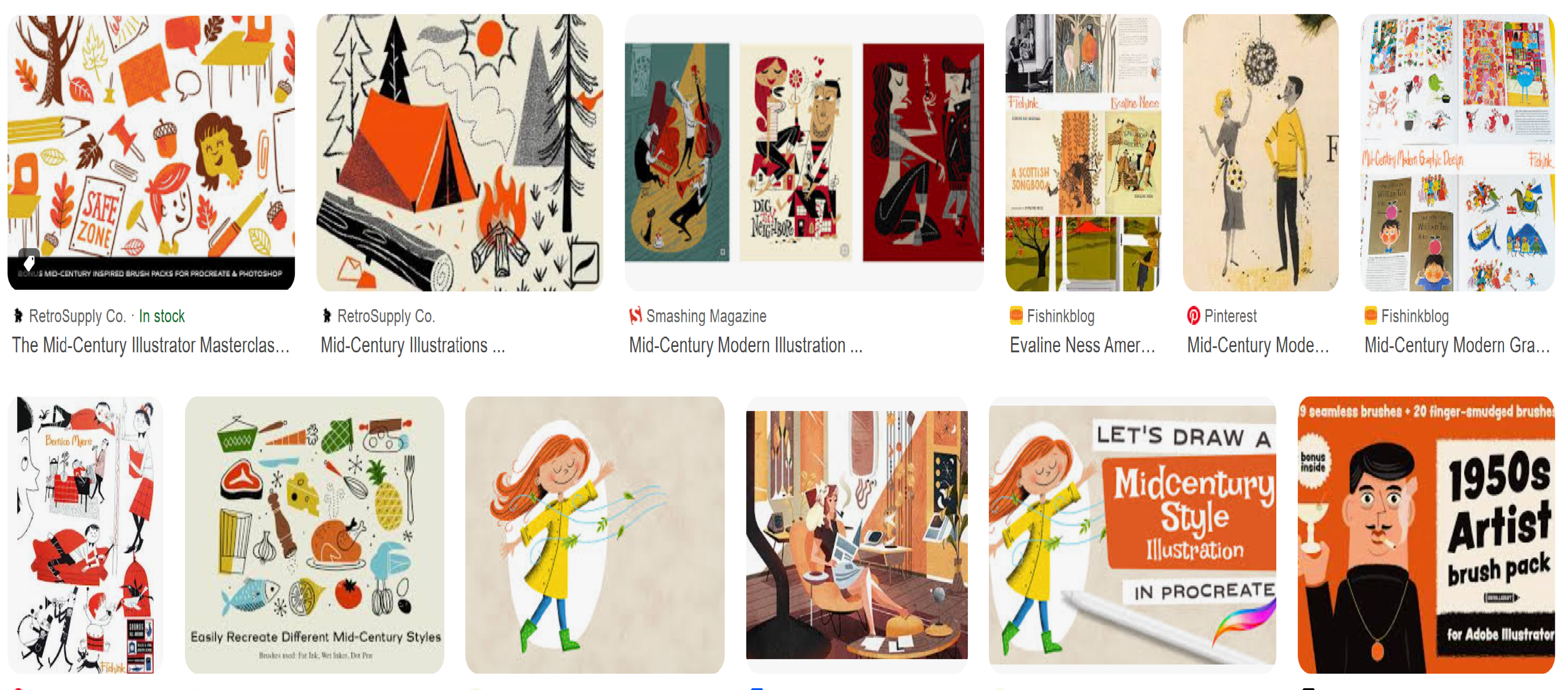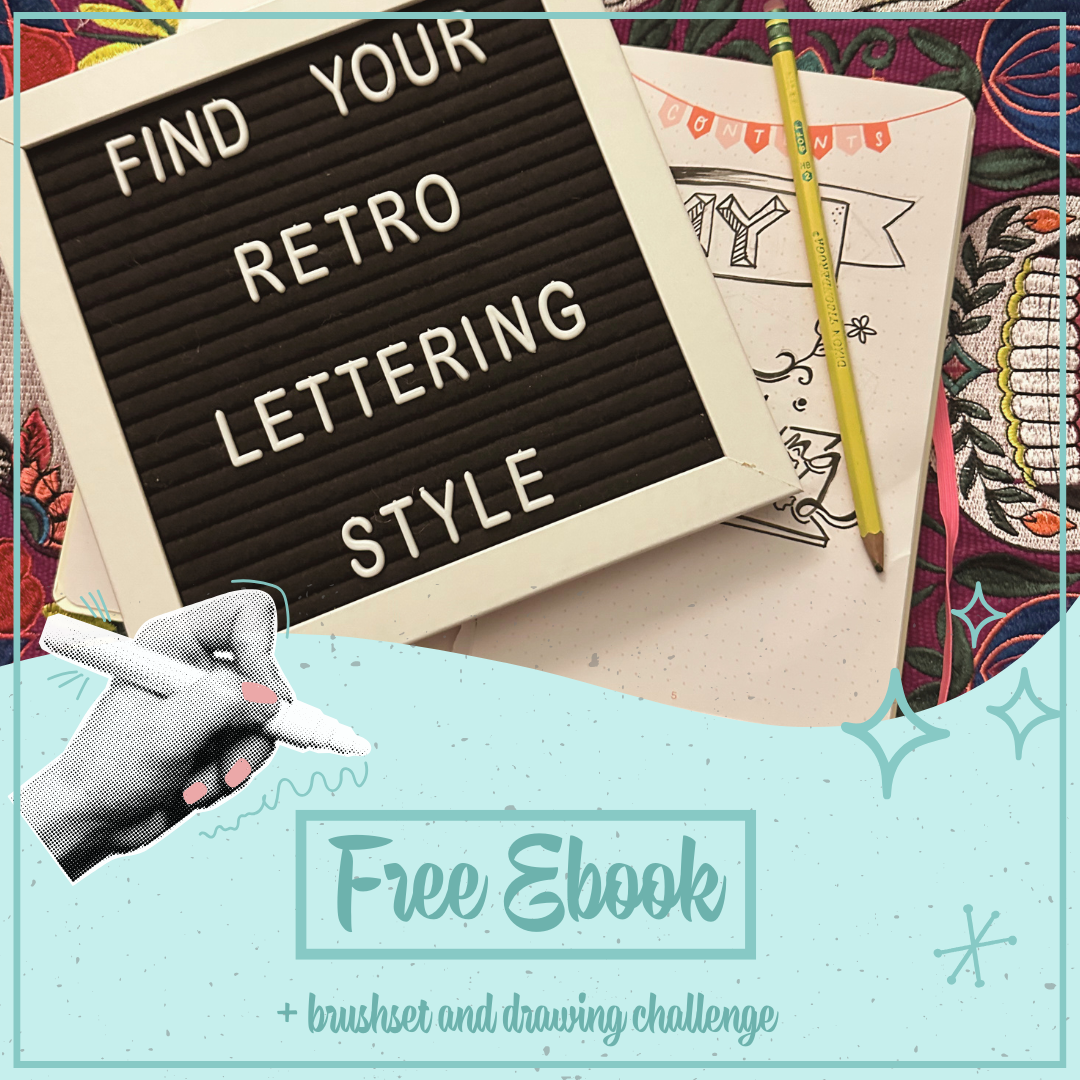The mid-century modern illustration style is a timeless aesthetic that captures the optimism, simplicity, and charm of the 1940s through the 1960s. Known for its bold shapes, limited color palettes, and playful compositions, this style remains popular today in everything from home decor to graphic design. If you want to bring this nostalgic yet modern look into your own artwork, here’s how to emulate the mid-century modern illustration style.
1. Understand the Characteristics of the Style
Before diving in, familiarize yourself with the key elements of mid-century modern illustrations:
-
Bold, Simplified Shapes: Focus on geometric forms and organic curves.
-
Limited Color Palettes: Use muted tones like mustard yellow, teal, rust, olive green, and brown, often paired with pops of brighter colors.
-
Texture and Imperfection: Incorporate subtle grainy textures or uneven lines to mimic traditional printmaking techniques.
-
Whimsical Themes: Explore playful, optimistic subject matter like nature, daily life, or space-age motifs.
-
Flat and Layered Look: Avoid heavy shading and aim for a flat, graphic quality with overlapping shapes to create depth.
2. Choose the Right Tools
The tools you use can significantly impact the outcome of your mid-century modern-inspired illustrations. Here are some suggestions:
-
Traditional: Try using gouache paints, colored pencils, or linocut printmaking for an authentic vintage feel.
-
Digital: Tools like Procreate, Adobe Illustrator, and Affinity Designer allow you to replicate the style with precision. Use retro-inspired brushes or create your own textures.
3. Focus on Composition
Mid-century modern illustrations often feature strong, balanced compositions. Keep these tips in mind:
-
Asymmetry: Aim for a balanced yet dynamic arrangement of elements.
-
Negative Space: Embrace negative space to give your design room to breathe.
-
Playful Layouts: Experiment with overlapping shapes, tilted angles, and off-center focal points.
4. Develop a Retro Color Palette
The colors of mid-century modern designs are instantly recognizable. Create a cohesive palette by:
-
Using Muted Tones: Select colors like dusty pink, burnt orange, sage green, and muted blues.
-
Adding Contrast: Include contrasting hues to make certain elements pop.
-
Sticking to a Limited Palette: Restrict yourself to 4-6 colors for a clean, cohesive look.
5. Incorporate Vintage Textures
Textures add warmth and authenticity to your designs. Here’s how to achieve a retro look:
-
Grainy Effects: Add subtle noise or grain to mimic traditional printing techniques.
-
Halftones: Use halftone patterns to replicate the look of vintage screen prints.
-
Rough Edges: Deliberately create imperfect lines or edges for a hand-drawn feel.
6. Experiment with Typography
Typography plays a crucial role in mid-century modern design. Pair your illustrations with retro-inspired fonts:
-
Popular Fonts: Look for typefaces like Futura, Helvetica, or Bauhaus for a clean, modern vibe.
-
Custom Lettering: Create hand-drawn type to match the organic feel of your illustrations.
7. Draw Inspiration from Iconic Artists
Study the work of mid-century artists and illustrators to better understand the style. Some notable figures include:
-
Mary Blair: Known for her whimsical use of color and shapes, especially in her Disney concept art.
-
Charley Harper: Famous for his stylized, geometric depictions of nature.
-
Saul Bass: Renowned for his bold, graphic movie posters and title sequences.
8. Practice with Simple Projects
Start small to hone your skills. Try these project ideas:
-
Create a retro greeting card featuring bold, stylized shapes.
-
Design a pattern inspired by mid-century home decor.
-
Illustrate a minimalist poster with geometric elements and vintage typography.
9. Stay True to the Era’s Optimism
Mid-century modern art often reflects a sense of hope and progress. Incorporate playful, positive themes like space exploration, family life, or nature to capture the spirit of the era.
10. Experiment and Make It Your Own
While it’s important to study the characteristics of the style, don’t be afraid to put your own spin on it. Experiment with combining mid-century elements with your personal aesthetic for a fresh take on this classic style.
By understanding the core elements and principles of mid-century modern illustration, you can create timeless designs that celebrate this beloved aesthetic. With practice and experimentation, you’ll soon master the charm and simplicity of this retro style. Happy illustrating!
Join the Conversation!
Have you tried creating mid-century modern illustrations? What’s your biggest challenge—choosing the right color palette, nailing the textures, or simplifying shapes? Drop a comment below—I’d love to hear your thoughts!
Want More Retro Design Tips?
If you enjoyed this post, check out How to Find your Illustration Style for more ways to find out how to develop your Illustration style.
Free Gift for Retro Art Lovers!
Sign up for my newsletter and get a free brush set and lettering guide to start your next project with ease! Plus, you’ll get exclusive design tips, freebies, and early access to new digital assets. Join here!







